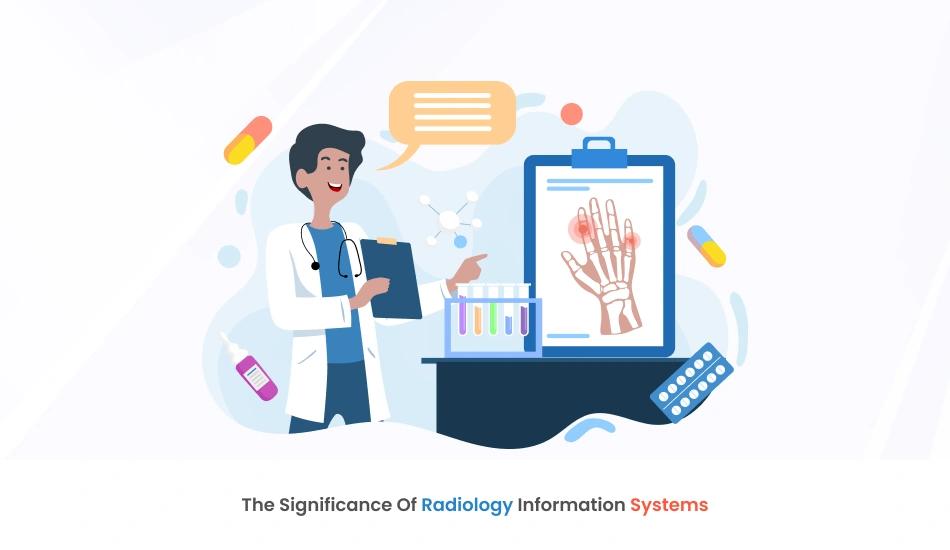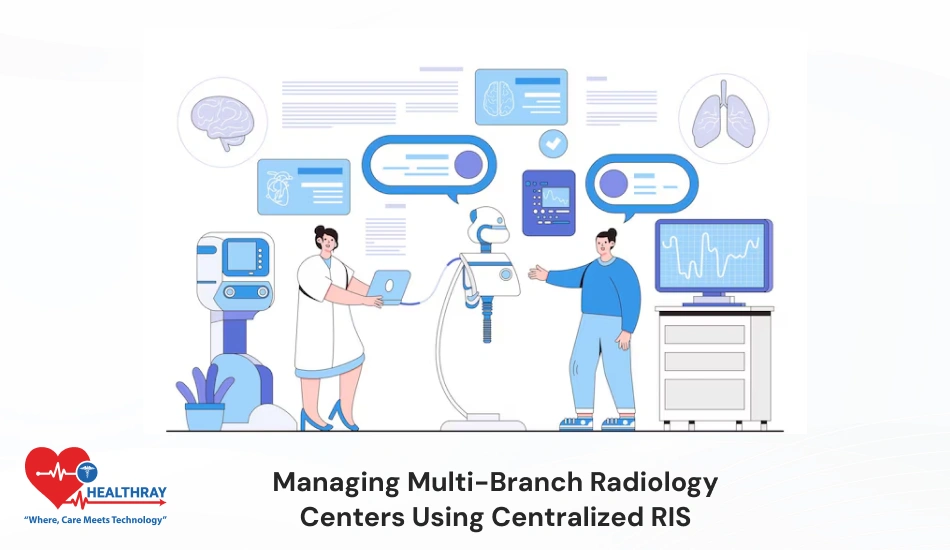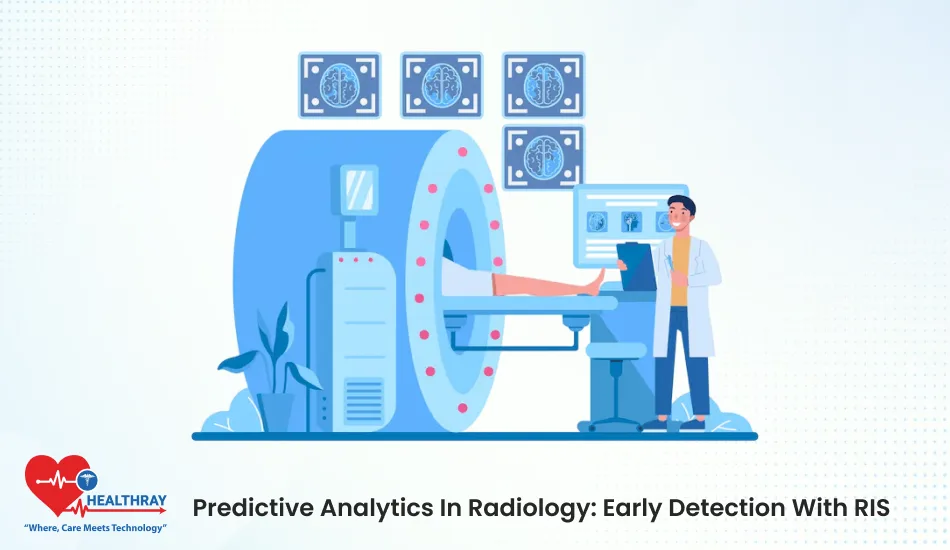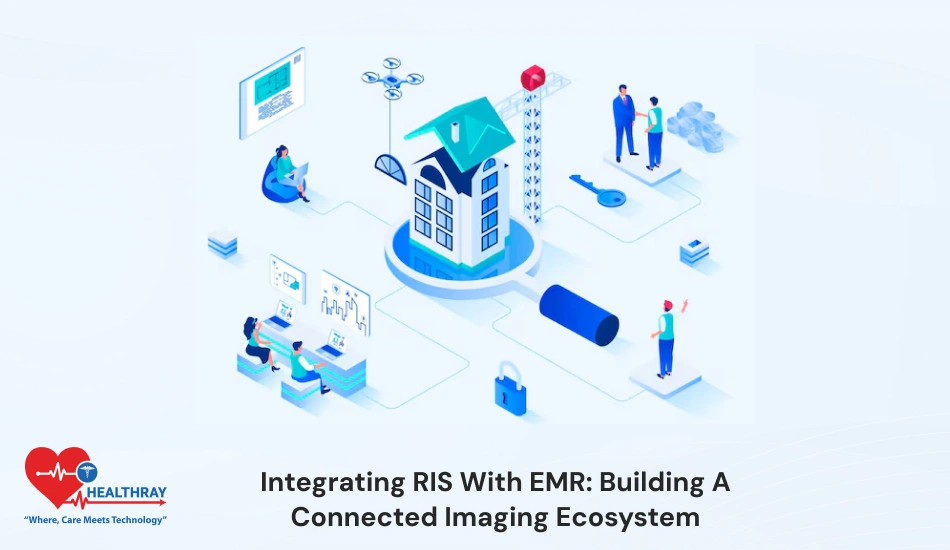Quick Summary
Radiology information systems is the software solution for administering radiology imaging and healthcare information. Moreover, it maintains medical images with sequential procedures and helps to monitor it. Want to understand more about radiology information systems? Then, check out this article.
Introduction
Does your organization’s expenses rise continuously ? One of the prominent reasons is handling tasks manually. In this modern landscape, all of your medical activities must be through the advanced system for mitigating costs and yielding extensive output.
We talk about radiology information systems, which is the leading technological system for handling medical images and preserving enormous information in the standard layout. Furthermore, it interlinked with the electronic medical record and support to effectively manage historical information.
Laboratory Information Management System is changing your way to manage medical documents and radiology images. Moreover, it modernizes radiology practices, reduces physician’s efforts, and minimizes costs that are mainly included in procuring manual processing items.
What is Radiology Information Systems?
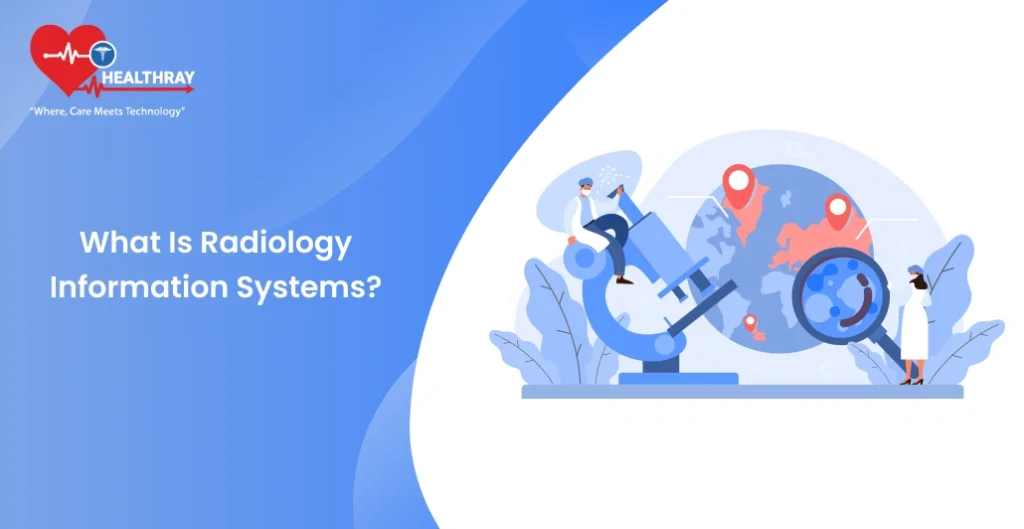
Radiology departments usually conduct the activities of diagnostic patients and administering medical images. Furthermore, this is responsibility we see but inside there is more than that as it schedules appointments, tracks patient disease, prepares a report analysis, and effectively transmit information to the healthcare providers.
The radiology information system maintains detailed information including their worker details and patient information in the accounting format. Furthermore, this software has the enormous potency to administer multiple patient data within the unified platform. Additionally, it closely supervises information through mobile devices and mingles with several systems.
This software helps to conform with health level seven (HL7), which is a set of regulations for seamless sharing information from one system to another. Furthermore, it aids in booking a physician slot from a patient’s convenient place. Ultimately, this system improves radiology workflows.
Top Attributes of the Radiology Information System
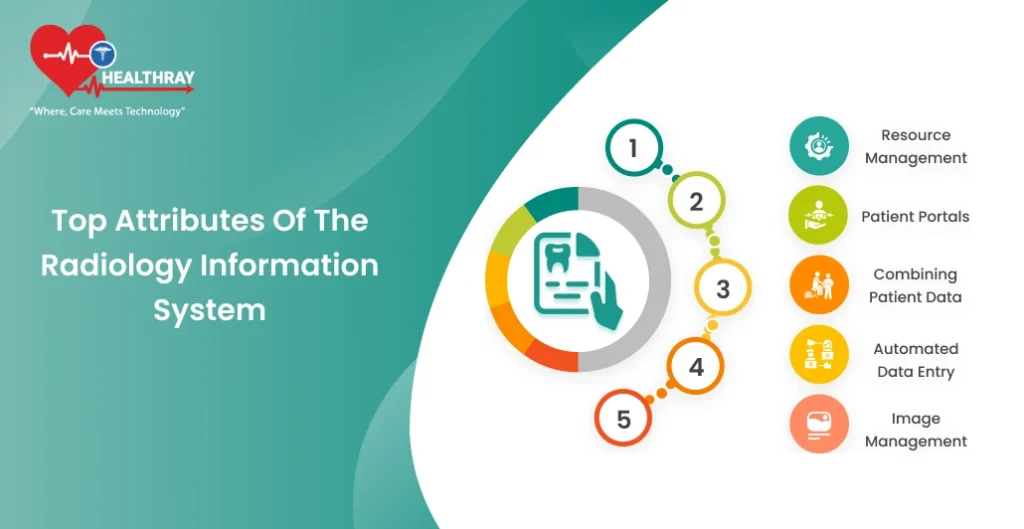
Radiology information systems (RIS) is the one software that meets each employee requirement, which is mainly worked in the radiology department. Moreover, it has the extreme potential to improve patient care, eradicate medical errors, and advance radiology practice. It also plays a key role in reducing radiology costs by streamlining workflows and automating manual processes, leading to greater efficiency and cost savings. Examine the top attributes of the radiology information system :
Resource Management
Prominent aspect for efficient workflow is to accurately manage resources of the radiology department. Moreover, LIMS Software help to manage resources in well-defined procedures. This system is closely integrated with numerous systems for making best decisions whether it is related to clinical department or departmental staff.
The main challenge is to decrease the number of patients and improper handling of radiology employees. Therefore, it reduces cash flow. With a radiology information system, it aids in managing revenue management, personnel management, and instrument management. Consequently, it improves patient safety, raises patient numbers, and helps to fulfill goals faster.
Patient portals
Implementing a radiology information system is the effective way to satisfy patients and raise their numbers. Furthermore, it reduces patient medical costs on visiting physicians, and mitigates efforts to assemble historical data. The department can easily send any information about the department through the notification. Patient portals have sundry benefits such as :
- Stores any data
- Book digital appointments
- View records from their any digital gadget
- Electronic payments
- Safe medical documents.
Combining patient data
The radiology information system also understands that patient management is equally important as operational management. Furthermore, It holds enormous patient data that includes the patient’s medical history, image recording, invoicing records, allergies information, medication information, and test results data.
The consolidated information helps to glance the whole department data in the unified screen. Therefore, it effortlessly finds any specified information and enhances organization productivity. Also, it simplifies to applying regulations in the data information. Consequently, it reduces operational expenses and keeps medical records confidential.
Step towards digital era with our healthcare solution
Revamp your hospital facilities and embrace change for better healthcare management. Ease in managing and organizing large medical datasets leads to effective analysis. Seize the opportunity now!
Automated data entry
The radiology hospital also has multiple departments such as revenue management department, customer service department, instrumentation department, laboratory software systems, managerial department, and accountant department. Moreover, these departments can record their associated information without any trouble.
Data entry takes too much time and invests a lot of substantial effort. However, the radiology information systems can automate all entries and save employee hours. It reduces repetitive entries, corrects mistakes instantly, improves mental health among employees, no human intervention, and eradicates manual processing.
Image management
The diagnostic centers are required to modify as per the technological advancement. Otherwise, there is a tremendous decline in patient’s number. Moreover, The RIS system is planned to advance diagnostic workflows and improve the environment of the radiology department. It has a vast database to store medical images and monitor it continuously.
This system has managed all types of radiologists whether it is CT scan of brain or X-ray report of bone marrow. Moreover, it aids in comparing previous images and can draft progressive reports of patients in the electronic format. The RIS software provides precision images that detect any diseases and analyze reports efficiently.
How do Radiology Information Systems improve patient care?

The prominent tool of enhancing patient care quality is to determine their expectation from the healthcare industry and implement advancing technology for accurate results. Furthermore, the radiology information system is the perfect one to fit the patient’s requirement criteria. We highlighted RIS systems functions, which improve patient care :
Patient tracking
Advancing healthcare facilities pulling patients at a higher rate and amplifying the revenue of healthcare organizations. Moreover, the radiology information system has links with special systems namely, the electronic health record for combined data at one point. Therefore, it supports patient tracking.
To monitor individual patients’ data with manual equipment is an arduous activity. On the other hand, the radiology information system simplifies this toughest procedure. Patient tracking provides a lot of advantages such as precisely disease monitoring, capturing digital imaging, and aids to more accurate diagnoses.
Patient Scheduling systems
Radiology information systems provide the remote facility to schedule their appointment with any physician. Moreover, this information is accumulated and arranged in an efficient manner. This system eases the patient’s tasks of booking appointments while saving their precious time. Patient scheduling systems have myriad advantages such as :
- Lowers medical costs
- Saves patient’s time
- Generating electronic waiting list
- Sending automatic reminders through SMS and Email
- Allocation of resources in advance.
Maintain patient database
Do you have a desire to have a patient information management system? Then, without wasting one second, you should install Healthray’s radiology information system. Furthermore, it facilitates enterprise master patient indexes that can save tremendous data.
It integrates with extraordinary communication systems that help patients to consult physicians as well as receiving hand-to-hand prescriptions. Furthermore, the recorded data can assist to transfer files through one system to another without any difficulty.
Additionally, it connects with PACS (picture archiving and communication system) for efficient recording of medical images and easily shares documents to any segment.
Patient engagement tools
It includes electronic health records, which facilitate numerous tools for satisfying patient needs and improves the one’s potency to data analysis. Moreover, it effortlessly conducted administrative tasks and exterminated paper based documentation.
There are legion tools such as patient portal, automated backups, reminders, storing of medical images, remote consultation, health screening, notification, online payment system, digital patient registration system, and associate with healthcare information systems.
Effortlessly data exchange
The radiology information system helps to transfer files immediately and aids to make better and efficient decisions. Moreover, it is possible to minimize operating expenses with increasing revenue through the feature of this system. Additionally, it synchronizes with systems such as laboratory information systems and hospital information systems for a smooth workflow. Effortlessly data exchange has several benefits such as :
- Boost collaboration
- Minimizes indirect expenses
- Greater patient service
- Enhanced efficiency
- Improving turnaround time
Conclusion
Radiology information systems are systematically developed for radiology departments because it seamlessly captures imaging records and supports analyzing efficiently. Furthermore, this system included a lot of attributes such as resource management, patient portals, combining patient data, automated data entry, and image management. Additionally, radiology information systems improve patient care and operational effectiveness.
